All issues

Volume 16, Issue 1
Displaying 1-5 of 5 articles from this issue
- |<
- <
- 1
- >
- >|
-
Shinya HASUO1981 Volume 16 Issue 1 Pages 1-13
Published: February 25, 1981
Released on J-STAGE: February 26, 2010
JOURNAL FREE ACCESSThe interferometer type Josephson devices, i.e. SQUIDs, are noted as potential elements for high speed computers. Recent studies on SQUIDs for logic and memory circuits are introduced here.
Design theory is presented for the purpose of applying the SQUIDs to these digital circuits. The threshold characteristics are expressed analytically by using device parameters such as junction length and distance between junctions. Experimentally obtained results are described in detail and they are compared with theoretical ones.
Recent studies on digital circuits using SQUIDs are presented and also new type SQUIDs are introduced.View full abstractDownload PDF (4438K) -
Takehiro ITO, Kaneyasu NISHIKAWA, Daisaku KASAO1981 Volume 16 Issue 1 Pages 14-20
Published: February 25, 1981
Released on J-STAGE: February 26, 2010
JOURNAL FREE ACCESSThe principle to predict the change of thermodynamic states of fluid flowing in a channel with fluid friction and heat transfer is established. Then it is applied to analyze the flow of supercritical helium in a very long conduit. The assumption in the process of formulation includes steady one-dimensional flow without the influence of body force, uniform cross section and uniform heat flux at the wall, and known prescribed friction coefficient which depends only on the Reynolds number. The effect of the Joule-Thomson coefficient which is an important factor for the thermodynamic analysis of cryogen in supercritical state and the influence of the term of kinetic energy which is often neglected in the engineering analysis of the flow system are examined. It is clarified that their contributions are of definite importance for long channels.View full abstractDownload PDF (859K) -
Hisayasu KOBAYASHI, Kyosuke ENOMOTO, Ko YASUKOCHI1981 Volume 16 Issue 1 Pages 21-28
Published: February 25, 1981
Released on J-STAGE: February 26, 2010
JOURNAL FREE ACCESSThis paper introduces the detailed construction of the cryostat deviced by Claudet et al for the pressurized superfluid helium II, in which the idea of the mutual friction between quantized voltices and normal components is applied. We also describes the test process of the cryostat operation. Five liters of superfluid helium under the atmospheric pressure were successfully cooled down to 1.6K by the use of a 3000l/min. mechanical pump.View full abstractDownload PDF (1993K) -
Kouji KANBARA, Takeshi OGASAWARA, Yoshikazu TATAHASHI, Yoji KUBOTA, Ka ...1981 Volume 16 Issue 1 Pages 29-38
Published: February 25, 1981
Released on J-STAGE: February 26, 2010
JOURNAL FREE ACCESSThe hysteresis loss in cylindrical non-ideal type II superconductors is investigated theoretically for the case where an alternating field is applied transverse to the conductor carrying a d.c. transport current. The cross-section of the shielded region in the superconductor is assumed to have an elliptical shape. In order to simulate the winding of superconducting magnets, the magnetic interaction between the turn under consideration and the surrounding turns is taken into account. The total hysteresis loss is analysed as a sum of the magnetization loss and the loss due to the dynamic resistance. The calculated losses for a wide range of the amplitude of the alternating field are given in graphs which clearly show how the transport current and the intraction among turns influence the hysteresis loss.View full abstractDownload PDF (1631K) -
Seizo TANAKA1981 Volume 16 Issue 1 Pages 39-43
Published: February 25, 1981
Released on J-STAGE: February 26, 2010
JOURNAL FREE ACCESSThis paper briefly reviews the miscellaneous specifications for helium in order to think over the possibility of standardizing a comprehensive specification for helium purity.View full abstractDownload PDF (597K)
- |<
- <
- 1
- >
- >|